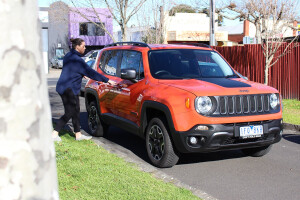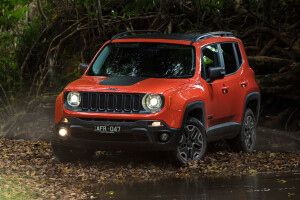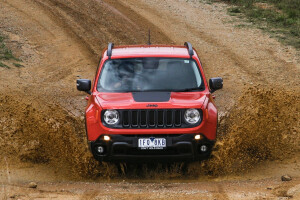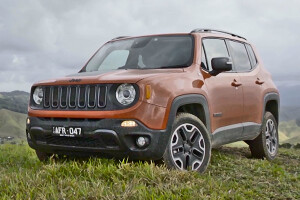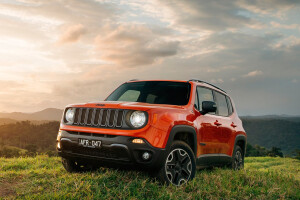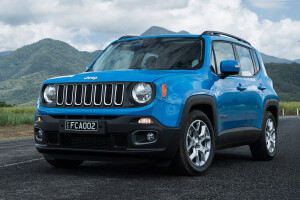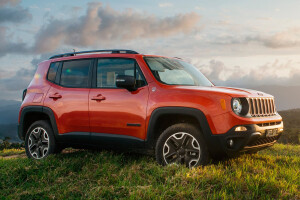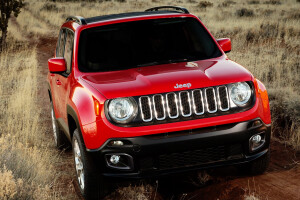Latest Review
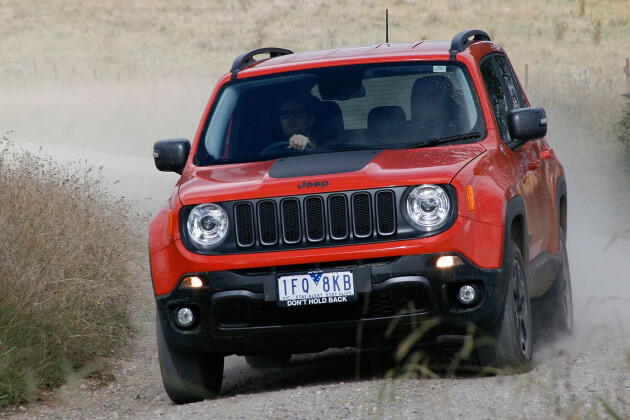
2017 Jeep Renegade Range Review
An energetic turbocharged engine, a space-efficient cabin and a long feature-list are highlights of the Jeep Renegade small SUV. The 4WD Renegade Trailhawk brings off-road cred.
What stands out?
An energetic yet frugal turbocharged engine, a tall and space-efficient cabin and a long list of luxury and convenience features are highlights of the Jeep Renegade small SUV. The four-wheel drive Renegade Trailhawk brings genuine off-road capability and protection.
What might bug me?
Admitting that that that you can’t take your Jeep off-road – unless you have bought the most expensive version, the Renegade Trailhawk.
Driving at 80km/h on your space-saver spare tyre until you can fix your full-sized flat – again, unless you have bought a Trailhawk, which has a full-sized spare wheel and tyre.
Having no way to play music from your CD collection. Like a growing number of new cars, the Renegade treats the Compact Disc as an obsolete technology, and is not equipped with a player.
What body styles are there?
A five-door SUV is the only body style. Most Renegades drive only their front wheels, but the Trailhawk drives all four wheels. The Jeep Renegade is classified as a small SUV, lower priced.
What features do all Renegades have?
Touchscreen, steering-wheel and voice control for the audio system, and Bluetooth-connected mobile phone functions. Analogue and digital radio, inputs via AUX and USB, and at least six speakers.
Power outlets (12V) on the centre console and in the boot.
Height and reach adjustment for the steering wheel, from which you can also operate the cruise control.
A rear-view camera.
A parking brake that is operated by an electric switch rather than a mechanical lever.
Electronic traction control, which helps prevent wheelspin on slippery roads.
On all but the Trailhawk, a space-saver spare wheel and tyre (the Trailhawk has a full-sized spare). A tyre pressure monitor, which tells you if a tyre is losing air – giving you early warning of a slow puncture.
Seven airbags, and electronic stability control. (For the placement of airbags, and more on the Renegade’s safety systems, please open the Safety section below.)
The Jeep Renegade has a five-year, 100,000km warranty.
Which engine uses least fuel, and why wouldn't I choose it?
The turbocharged 1.4-litre four-cylinder is the most economical of the three engine options. It uses 5.9 litres/100km on the official government test cycle (city and country combined). In real-world driving it’s a bit thirstier, using about 7.5 litres/100km.
This very good engine powers automatic-gearbox versions of the least costly Renegade, the Sport, and all Renegade Longitudes and Limiteds.
The main reason you might not choose it is that you want to treat your Renegade as a proper Jeep, and drive it on tracks and trails. It is not available on the only four-wheel drive model, the Trailhawk.
The other reason you might not choose it is that you would like to pay as little as possible for your Renegade, by opting for the Renegade Sport and a manual gearbox.
Manual versions of the Sport use a slightly bigger, but less powerful, non-turbocharged 1.6-litre four cylinder. It uses only marginally more fuel than the 1.4 turbo.
The 4WD Renegade Trailhawk uses a much bigger, 2.4-litre, non-turbo four-cylinder. Even though it is bigger, and ultimately makes more power, it does not feel as strong as the 1.4 turbo in most driving conditions. And it uses about 20 per cent more fuel (over a mix of city and country driving). All Renegade engines run on petrol.
The Renegade Sport offers a five-speed manual gearbox or a six-speed dual-clutch automatic. The Longitude and Limited offer only the six-speed dual-clutch automatic. The Renegade Trailhawk comes only with a nine-speed conventional auto.
Dual-clutch automatics operate much like a manual gearbox with robotic control. They save fuel and shift very swiftly and smoothly on the highway, but generally don’t feel quite as fluid and elastic as a conventional auto in stop-start driving conditions. Nevertheless, the dual-clutch autos in Renegade test cars worked unobtrusively in city traffic.
What key features do I get if I spend more?
Prices start with the Sport manual, which has cloth-covered seats, a 5.0-inch touchscreen, 16-inch steel wheels, and the least powerful (1.6-litre) engine. Spend more on a Sport and you can have the more powerful, 1.4-litre turbo, engine, with its six-speed automatic gearbox.
Walk past the Sport to the more costly Longitude, and you keep the 1.4 turbo auto. You also get two-way electric adjustment for the driver’s seat, and dual-zone climate control (where the driver and passenger can individually select cabin temperatures). Headlights switch on automatically when it gets dark, there are front foglights, and wipers operate automatically when it rains. Wheels are an inch bigger than those on the Sports, at 17 inches, and are made from aluminium alloy. They use lower profile tyres and look fancier.
Spend more again for a Renegade Limited and you gain leather seats, with heating and eight-way power-adjustment for both driver and passenger. There is satellite navigation, displayed on a bigger touchscreen (6.5 vs. 5.0 inch). The sound system is better and has a further three speakers, making nine. Headlights are brighter, bi-xenon, units, and there are rear parking sensors (which help you judge how close you are to obstacles). You can unlock the car and drive away without taking the proximity key from your pocket or bag. The wheels grow a further inch to 18 inches. The engine and gearbox are the same as the Longitude’s.
Choosing a Limited also allows you to add, at extra cost, active driver aids from two Safety packs. One – the Safety Pack – brings you a forward collision warning, auto braking, a lane departure warning, blind-spot detection, and rear cross-path detection (for more on these features, please open the Safety section below). The other – the Advanced Safety Pack – brings you Adaptive cruise control, which will match your speed to that of slower cars ahead on the highway, returning to your pre-set when the way is clear. It also gets you a self-parking system.
The most expensive Renegade is the off-road oriented Trailhawk. The Trailhawk matches the Limited for most appointments (seat material is cloth, with leather optional), but comes with the 2.4-litre engine and – importantly – the nine-speed conventional auto gearbox. Its first gear is relatively low, which means you can drive steadily at slow speeds in rough going. And it drives all four wheels.
The Trailhawk also rides higher, so that it can clear obstacles more easily, and has different front and rear body mouldings that do not extend as far past the wheels, which helps when nudging up to and driving off obstacles. Steel plates under the body protect the engine, fuel tank and other vitals from off-road damage. Wheel size shrinks back to 17 inches, tyres are designed for off-road use, and you get a full-sized spare.
On a Trailhawk you can option the lane departure warning, blind-spot monitor, rear cross-path detection and self-parking – but not the auto emergency braking.
On a Longitude, Limited or Trailhawk you can option a My Sky sunroof – two manually removable roof panels. On a Limited or Trailhawk you can option instead a powered, glass, Panoramic sunroof.
Does any upgrade have a down side?
The 17-inch and (especially) 18-inch tyres on the Longitude and Limited don’t ride as smoothly on bumpy roads as the 16-inch tyres on the Sport, and are more expensive to replace.
The Trailhawk rides higher than the other Renegades and, with its bigger engine, underbody protection and 4WD system, is considerably heavier. It does not feel as nippy to handle as the others, and it uses more fuel.
Only white paint comes at no additional cost.
How comfortable is the Renegade?
The Renegade feels roomy for a small SUV, thanks to a tall cabin. There’s also plenty of seat and steering-wheel adjustment, so that short and tall drivers can get comfortable. The wide and forward-placed pillars either side of the windscreen obstruct vision annoyingly, however.
Even on the Renegade Sport and Longitude, the cabin’s fit and finish is good. The more expensive Limited and Trailhawk have the bigger and more useable touchscreen, and leather trim either standard or optionally. Minor controls and switchgear are logically placed, and the connectivity and sat-nav systems are intuitive to use.
The Renegade is easy to park, thanks to good vision from the high driving position - and to the square body shape.
The Renegade steers nicely and handles well across a wide range of road surfaces. However it’s noticeably noisy on gravel roads and coarse-chip bitumen.
Engine response and general drivability vary enormously depending on the engine fitted, but even the least powerful engine is adequate on the highway.
What about safety in a Jeep Renegade?
All Renegades have seven airbags: two directly in front of the driver and front passenger; one alongside each front occupant to protect the upper body; curtain airbags down each side of the car to protect the heads of those sitting next to a window; and an airbag to protect the driver’s knees and legs.
All Renegades also have a reversing camera, and electronic stability control. The latter can help you bring a skidding car back under control, and is mandatory on all new cars.
All Renegades bar the Sport have auto-on headlamps – which help make sure you are visible to other drivers.
No Renegade has autonomous emergency braking standard. However, you can option it at extra cost on a Renegade Limited (only). The option, titled Forward Collision Warning Plus, reads the road ahead with radar and video sensors. If the system concludes you are closing too fast on a vehicle or other large obstacle ahead, it will supply a warning. If you ignore the warning it will apply the brakes automatically.
On a Limited or Trailhawk you can option Lane Departure Warning Plus. This system is designed to prevent your drifting distractedly – or sleepily – out of your lane on the highway. If it senses that you are about to leave your lane without indicating, it will apply a gentle steering correction that alerts you while helping to bring the car back.
Also available on a Limited or Trailhawk are two rear-facing sensory driver aids: Blind-spot monitoring and Rear cross-path detection. The former alerts you to vehicles travelling near your rear corners, which might not show in your mirrors. The latter helps when you are reversing, perhaps from a shopping centre car park: it alerts you to cars approaching your path from either side.
The Australasian New Car Assessment Program (ANCAP) has rated the Renegade at five stars for safety, its maximum. The five star rating, announced in October 2016, applies to front-drive Renegades built since May 2016. The 4WD Renegade Trailhawk was not tested.
I like driving - will I enjoy this car?
That depends on which model you are driving, and on where you want to drive. The Renegade is three very different cars, depending on the engine and gearbox combination fitted.
Behind the wheel of the Sport 1.6 manual there isn’t much excitement. This is a city car, and not much more. The engine needs to be revved hard to give its best, and is noisy when doing so.
There is far better news with the 1.4-litre turbo engine in the Sport auto, Longitude and Limited. This is very responsive at all speeds, notably quiet and smooth, and much more useable for out-of-town excursions. It is the pick of the three engines.
The non-turbo 2.4-litre engine in the Trailhawk is more powerful on paper but you have to work it harder to get at the power, and it is driving a taller and heavier car. It’s still good on the highway, though, cruising and overtaking quite happily.
If you are interested in off-roading, then the Trailhawk offers a level of off-road ability that only one other small SUV can match – and that is the Suzuki Jimny, which drives more like a small truck than a small car.
The Trailhawk 4WD system is fully automatic, and in very slippery conditions directs drive to the wheel or wheels that can use it most. Using a switch, the driver can tailor its response for different driving conditions, such as snow, sand, mud or rocks.
The low first gear in the wide-ratio nine-speed gearbox means the Trailhawk can crawl along at very low speeds, even against brakes, without stalling. Best of all, the Trailhawk is well protected underneath. While you might get it stuck if you try hard enough, you’re not likely to damage anything serious.
How is life in the rear seats?
The Renegade’s cabin works well in as much as a tall adult can sit in the rear seat behind a tall driver and not be cramped. The rear seat cushion is quite long, again making it comfortable for tall adults. However, sitting three mid-sized adults across the rear isn’t possible.
The cabin is a good height for getting small children in and out of child seats, for which there are two sets of ISOFIX attachment points.
How is it for carrying stuff?
The Renegade has a small SUV body, so don’t expect much luggage space. However, because it is tall and square, the boot is bigger than in than many similar vehicles. It is accessed by a single top-hinged door.
The spare wheel is stored in the cargo area, which means removing any luggage if you get a flat tyre.
The back seat folds 60/40 and reasonably flat, to lengthen the luggage space if need be.
If you wish to tow a small boat or camper trailer, all Renegades except for the Sport manual and the Trailhawk can tow a handy 1200kg. The others tow considerably less: up to 800kg for the Sport manual, and 907kg for the Trailhawk.
Where does Jeep make the Renegade?
All Australian-delivered Renegades are built in Italy.
What might I miss that similar cars have?
Even better fuel-efficiency and a longer touring range from a diesel engine (available in the Mazda CX-3 and Suzuki Vitara, for example).
On the less costly of the Renegades, autonomous emergency braking. This is standard on the CX-3 and Toyota C-HR, for example. (On a Renegade, you can option it only on a Limited.)
Support for Apple CarPlay and Android Auto, which would let you display apps from your compatible smartphone on the car’s touchscreen and use them from there. The Holden Trax and Subaru XV offer this, for example.
Other cars you might consider include the Ford Eco-Sport, Nissan Qashqai, and Mitsubishi ASX.
Are there plans to update the Renegade soon?
The Renegade was all-new when it arrived in Australia late in 2015. About July 2017 steel wheels were substituted for alloy on the Renegade Sport, the Longitude lost its rear parking sensors and blind-spot monitor, and blind-spot and rear cross-path detection were added to Safety pack options for the Limited and Trailhawk.
Don’t expect a generational change before 2020, and you are likely to see only detail changes in the mean time.
I like this car, but I can’t choose which version. Can you help?
Provided you don’t need 4WD, the Limited offers the best value and it allows you to add auto braking. If you want to go off road there is only one choice: the Trailhawk.
Score breakdown
Things we like
- Notably responsive and fuel-efficient 1.4 turbo engine
Not so much
- The only model with 4WD does not have this engine
News
-
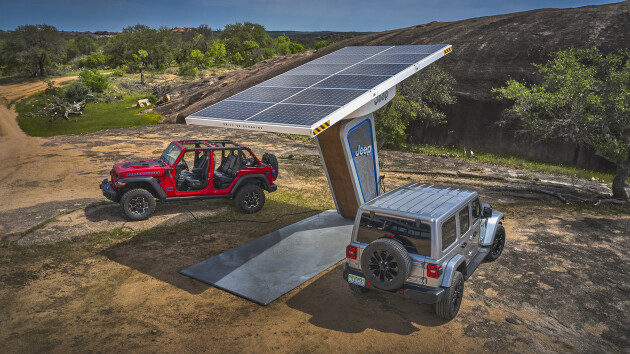 News
NewsJeep to reveal electrification plans on 4xe Day, Sep 8
Jeep to reveal its roadmap towards the incoming electric age on 4xe Day, tomorrow
-
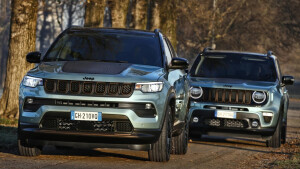 News
News2022 Jeep Compass and Renegade gain new hybrid drivetrain
Jeep has introduced a new hybrid model to the Compass and Renegade line-ups
-
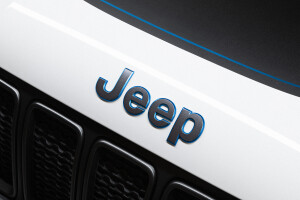 News
NewsEntry-level Jeep SUV set for production in 2022
Details emerge for Jeep’s new entry-level SUV
-
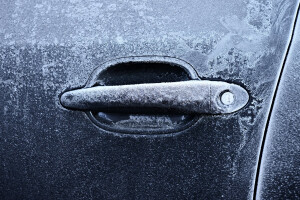 Advice
AdviceTop five car features to keep you warm during winter
Game of Thrones may have come to an end, but winter is still coming. So we visit five features that make driving in the frosty depths of winter more bearable than finding a new show to binge.
-
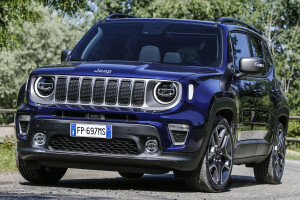
2019 Jeep Renegade PHEV confirmed
-
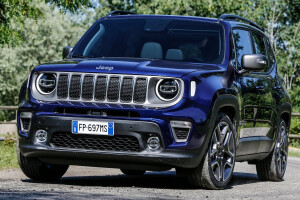
2019 Jeep Renegade revealed
-

2017 Jeep Renegade Desert Hawk, Limited Edition
-
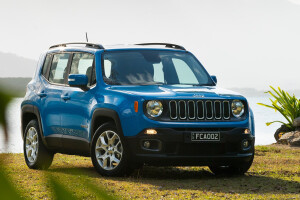
2016 LA Motor Show: Jeep assessing sub-Jeep Renegade baby SUV


